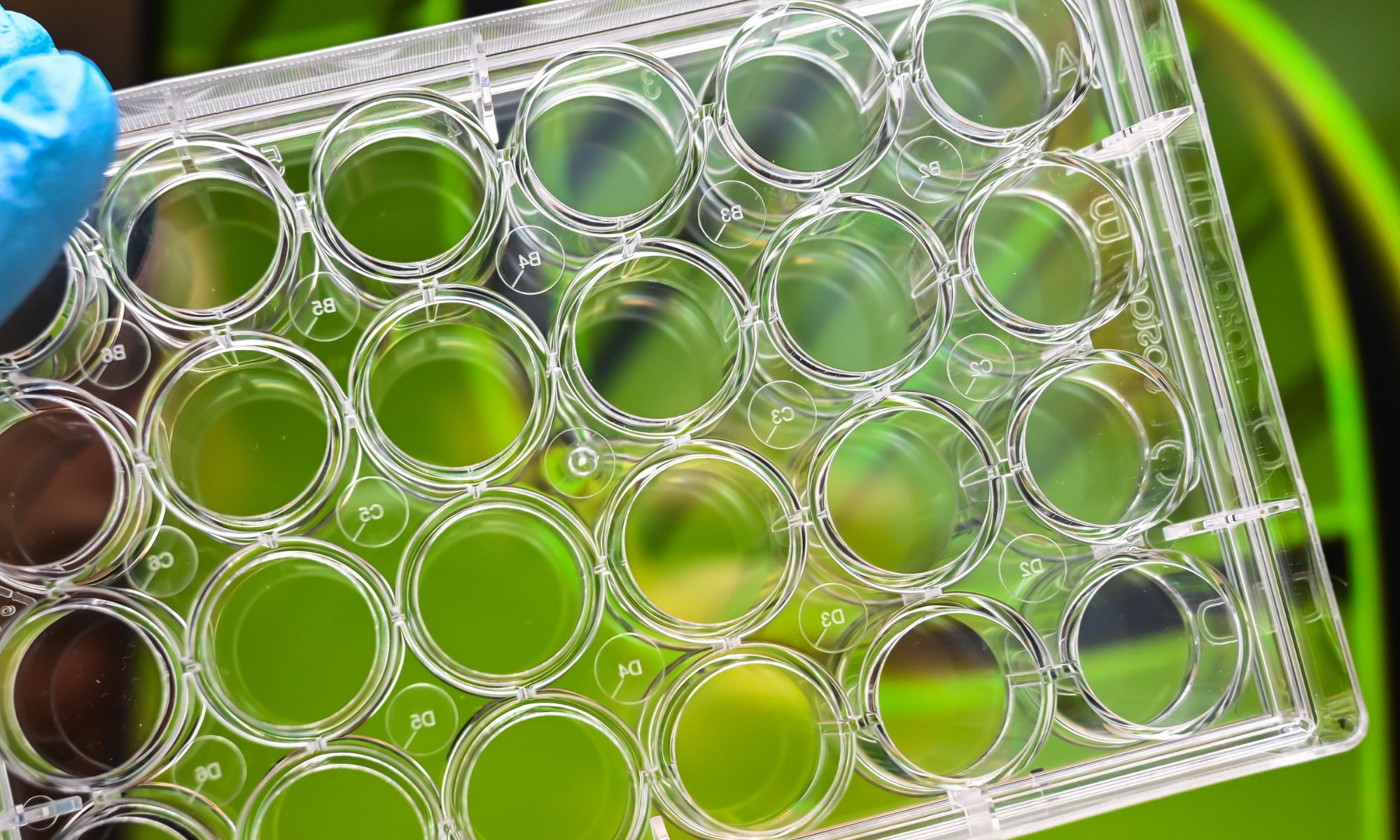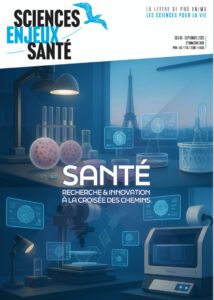
MPS beating organoids in the qualification race, European Challenge competition to accelerate the adoption of NAMs,Standardized Organoid Culture Method, ToxPredictor for DILI, and more
News on non-animal methods
NOVEMBER 24 - 28, 2025NEWS, REPORTS & POSITION STATEMENTS
1. MPS are beating organoids and spheroids in the NAMs qualification race
Last week, the FDA published four new LOI (Letter of Intent) determinations for the ISTAND Program ; two acceptances and two rejections. There are now 11 technologies formally accepted into the ISTAND Program including 7 in vitro systems for preclinical testing.
Of the 7 accepted in vitro NAMs, 4 are microphysiological systems (MPS) or organ-on-a-chip technologies, 3 use standard 2D cell culture techniques, none are 3D organoids or spheroids. MPS and organoid systems often pursue similar applications for predicting tissue toxicity. These numbers tell an important story : MPS technologies are currently being favored over organoids in the race toward regulatory acceptance.
2. MPS as a pillar of the Human Exposome Project
Every part of our lives —where we live, the stresses we face, the toxins and pathogens we’re exposed to— affects our health. When we consider all those different influences on our health, inside and out, we are talking about the exposome.
Studying the exposome has the potential to unlock a ton of invaluable information about sickness and health for individuals and populations all over the world. To truly study the exposome effectively, a new review co-authored by Johns Hopkins Center for Alternatives to Animal Testing (CAAT) members argues the need to combine NAMs : microphysiological systems –MPSs– empowered with AI to tackle the challenge of the Human Exposome Project.
3. EPAA Report on the “NAMs User Forum”
The European Partnership for Alternative Approaches to Animal Testing (EPAA) held the “New Approach Methodology (NAMs) User Forum” at the European Chemicals Agency, Helsinki, Finland on October 30 – 31, 2024. The User Forum brought together stakeholders from regulatory agencies, industry, non-governmental organisations (NGOs) and academia, as well as European Union competent authorities.
Progress in the development of the developmental neurotoxicity in vitro battery (DNT IVB) and Alternative Safety Profiling Algorithm (ASPA) were described, as well as five case studies describing uses of NAMs for chemical safety assessment. The presentations confirmed progress in NAMs and, in particular, the value of tiered testing strategies to bring together different lines of evidence.
4. The FDA’s new route to approve bespoke therapies
In the US, some drug approval would no longer start with a trial, but with a mechanistic study. The FDA has introduced the Plausible Mechanism Pathway : a new route to approve bespoke therapies when classic trials are impossible.
This pathway provides solutions such as biologically defined and actionable work, a structured regulatory route, months from design to first dosing in the most urgent pediatric cases but also long-term real-world evidence, ongoing monitoring for off-target edits, immune issues, developmental risks and registries to track durability and outcomes. If a platform shows success in several different patients, even with unique bespoke edits, the FDA can move toward platform-level authorization, not just case-by-case exemptions.
INTERVIEWS, NOMINATIONS & AWARDS
5. Schottenstein Prize laureate dedicated to cardiovascular research
The Ohio State University Wexner Medical Center’s Heart and Vascular Center has named Joseph Wu, MD, PhD, director of the Stanford Cardiovascular Institute, as recipient of the 2025 Jay and Jeanie Schottenstein Prize in Cardiovascular Sciences. Awarded biennially, the Schottenstein Prize is among the largest monetary prizes in the U.S. dedicated to cardiovascular research.
Wu and his lab focus on using human induced pluripotent stem cells (iPSCs) to better understand cardiovascular diseases and accelerate the discovery of drugs and also championed the adoption of NAMs such as organoids, tissue-on-chips and MPS. “This honor truly belongs to the incredible staff, trainees and collaborators I’ve been fortunate to work with over the past 20 years at Stanford. Their dedication and creativity continue to inspire me every day. I’m hopeful that our collective efforts will help accelerate the translation of scientific discoveries into new therapies that ultimately improve patients’ lives” Wu said.
TOOLS, PLATFORMS, CALLS
6. Advanced Innovation Challenges from the European Innovation Council
The European Innovation Council (EIC) Advanced Innovation Challenges (AIC) aim to support high-risk, demand-driven deep tech innovation with transformative potential especially in areas where there is extensive research but lack of commercial uptake. The pilot aims to assess whether competitive, stage-gated support can accelerate the path to market for high-risk deep tech innovations, and whether early integration of demand-side actors can enhance the relevance, validation, and ultimately the uptake of breakthrough solutions.
The 2026 Challenge 2 is on NAMs : Translating Disruptive New Approach Methodologies (NAMs) into Practice. This AIC Challenge competition therefore looks to accelerate the adoption of NAMs in biomedicine and support companies that want to bring NAMs to the market.
Check out our calls interface and find out EU and international calls in one space.
INDUSTRY, BIOTECH & PARTNERSHIPS
7. Partnerships to unlock drug response predictions and biomarker insights
- Guardant Health, a leading precision oncology company, and Zephyr AI, a leader in precision medicine harnessing artificial intelligence (AI) to accelerate drug development, announced a strategic partnership to deliver novel, scalable, and actionable insights that support biopharmaceutical innovation. This collaboration will combine unique multimodal molecular data and AI/ML technology from both companies driving advancement of novel cancer biomarkers for drug development, targeted therapies selection, and response monitoring.
- BenchSci, a leading provider of AI software for biopharma research and development, and Mila — Quebec Artificial Intelligence Institute, one of the world’s premier AI research centers, announced a new collaboration that will unite BenchSci’s deep expertise in biological data with Mila’s world-class research in AI. Together, the teams aim to develop models capable of automating the creation of novel scientific hypotheses and experimental assay prediction — a major step toward the vision of autonomous drug discovery.
8. Molecular Devices secures U.S. Patent for scalable, standardized organoid culture method
Molecular Devices, a leading provider of high-performance life science solutions, announced the issuance of U.S. Patent No. 12,351,820 B2, titled “Methods for Culturing Organoids”.
The patent covers aspects of the company’s novel bioreactor-based method for producing organoids. Molecular Devices’ method results in organoids with unprecedented consistency and scale, enhancing the company’s 3D Ready™ portfolio, which offers assay-ready, cryopreserved patient-derived organoids for immediate use in research or expansion services of a customer’s own organoid line.
SCIENTIFIC DISCOVERIES & PROTOCOLS
9. Bayesian modeling of gene regulatory networks in colorectal cancer organoids
Tumor organoids (tumoroids) have emerged as a compelling platform for cancer research, owing to their capacity to replicate the genetic and structural complexity of human tissues. However, extracting meaningful gene regulatory insights from bulk RNA sequencing data derived from tumoroids remains nontrivial due to cellular heterogeneity and temporal variation.
A research team proposes for the first time a comprehensive Bayesian framework to model gene expression dynamics throughout the developmental trajectory of colorectal tumoroids. The proposed approach demonstrates robust performance in capturing high-dimensional relationships, enabling elucidation of key regulatory mechanisms in tumor progression. The results offer valuable insights for personalized treatment and underscore the utility of Bayesian methods in complex biological systems.
10. Cyclic immunofluorescence to create 3D images of human tissue samples
Diseases such as cancer involve alterations in cell proportions, states and interactions, as well as complex changes in tissue morphology and architecture. Histopathological diagnosis of disease and most multiplexed spatial profiling relies on inspecting thin specimens.
Harvard Medical School scientists have developed a high-plex cyclic immunofluorescence (CyCIF) method for 3D tissue imaging and uses it to show that few, if any, cells are intact in conventional thin tissue sections, reducing the accuracy of cell phenotyping and interaction analysis.The high resolution of this confocal approach generates images of cells in a preserved tissue environment at a level of detail previously limited to cell culture. Precise imaging of cell membranes also makes it possible to detect and map cell – cell contacts and juxtracrine signaling complexes in immune cell niches.
Read the publication in Nature Methods
11. A large-scale human toxicogenomics resource for DILI prediction
Drug-induced liver injury (DILI) is one of the most significant safety challenges in developing therapeutics today, as animal models fail to identify as many as half of investigational drugs linked to DILI.
To address this challenge, Cellarity designed an integrated AI model called ToxPredictor, which evaluates toxicogenomics to predict dose-related DILI risks. The core of this framework is a transcriptomics library in primary human hepatocytes called DILImap, which illustrates the transcriptional signature of 300 compounds linked to DILI at multiple concentrations. The publication describes the validation of the framework, which demonstrated 88% sensitivity at 100% specificity in blind evaluation, outperforming more than 20 industry-standard preclinical safety models and identifying numerous phase 3 clinical safety failures that had been undetected in animal studies.
Read the publication in Nature Communications
WORTH (RE)SHARING
hDMT is excited to announce the launch of Young hDMT, a new team representing early-career researchers across the Dutch disease-modeling and organ-on-chip community.
Beginning next year, Young hDMT will work to build an inclusive and engaged network of young scientists, offering opportunities for collaboration, career development, and peer support.
“My most controversial opinion : Animal testing for scientific research can be completely eliminated in less than 20 years.” – by Michael Phelan,
Founder of InnovApproach Consulting


